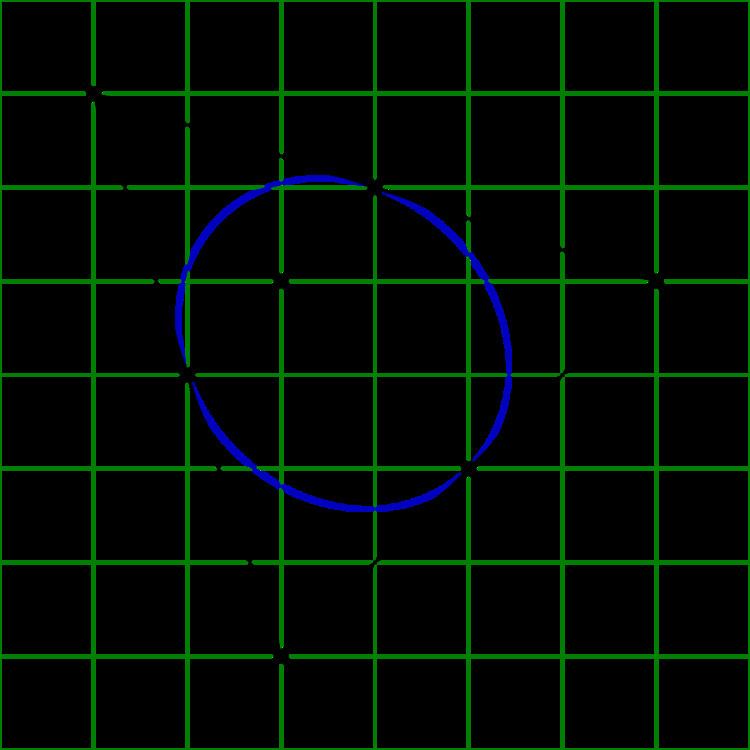 | ||
In geometry, the Steiner inellipse, midpoint inellipse, or midpoint ellipse of a triangle is the unique ellipse inscribed in the triangle and tangent to the sides at their midpoints. It is an example of an inconic. By comparison the inscribed circle and Mandart inellipse of a triangle are other inconics that are tangent to the sides, but not at the midpoints unless the triangle is equilateral. The Steiner inellipse is attributed by Dörrie to Jakob Steiner, and a proof of its uniqueness is given by Kalman.
Contents
The Steiner inellipse contrasts with the Steiner circumellipse, also called simply the Steiner ellipse, which is the unique ellipse that touches a given triangle at its vertices and whose center is the triangle's centroid.
Trilinear equation
The equation of the Steiner inellipse in trilinear coordinates for a triangle with side lengths a, b, c is
Properties
The center of a triangle's Steiner inellipse is the triangle's centroid — the intersection of the triangle's medians. The Steiner inellipse is the only inellipse whose center is at the triangle's centroid.
The Steiner inellipse of a triangle has the largest area of any inellipse of that triangle; as the largest inscribed ellipse, it is the John ellipsoid of the triangle. Its area is
The Steiner inellipse is the only inconic that is tangent at the midpoints of two of the triangle's sides. That is, if an ellipse is tangent to the triangle at two sides' midpoints and also tangent to the third side, then the latter point of tangency is the midpoint of that side.
The Steiner inellipse is the Steiner circumellipse of the medial triangle.
The lengths of the semi-major and semi-minor axes for a triangle with sides a, b, c are
where
According to Marden's theorem, if the three vertices of the triangle are the complex zeros of a cubic polynomial, then the foci of the Steiner inellipse are the zeros of the derivative of the polynomial.
The major axis of the Steiner inellipse is the line of best orthogonal fit for the vertices.
Denote as G, F+, and F− respectively the centroid and the first and second Fermat points of a triangle. The major axis of the triangle's Steiner inellipse is the inner bisector of ∠F+GF−. The lengths of the axes are |GF−| ± |GF+|: that is, the sum and difference of the distances of the Fermat points from the centroid.
The axes of the Steiner inellipse of a triangle are tangent to its Kiepert parabola, the unique parabola that is tangent to the sides of the triangle and has the Euler line as its directrix.
The foci of the Steiner inellipse of a triangle are the intersections of the inellipse's major axis and the circle with center on the minor axis and going through the Fermat points.
As with any ellipse inscribed in a triangle ABC, letting the foci be P and Q we have
Generalization
The Steiner inellipse of a triangle can be generalized to n-gons: some n-gons have an interior ellipse that is tangent to each side at the side's midpoint. Marden's theorem still applies: the foci of the Steiner inellipse are zeroes of the derivative of the polynomial whose zeroes are the vertices of the n-gon.
